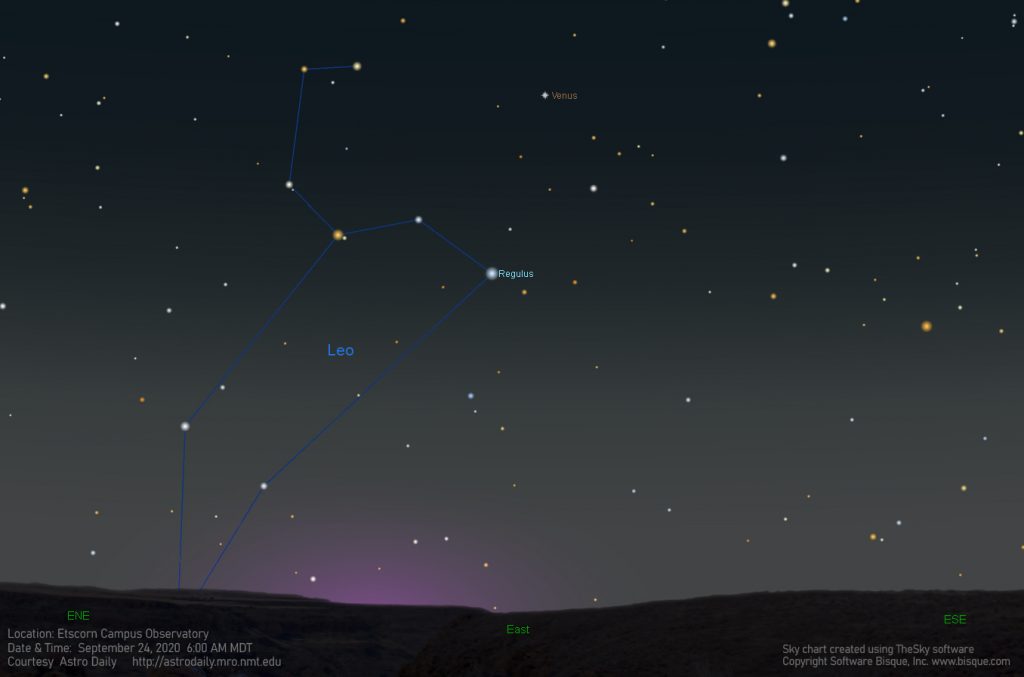By Shelbi Etscorn
People around the world are buzzing with the latest news to come out of the world of astronomy: scientists have just announced that phosphine has been detected on Venus. Ok, so admittedly this doesn’t sound like such Earth shattering news, so what’s the big deal? Well phosphine, like oxygen, is a sign that scientists look for as a possible indication of the presence of life. This is because, as far as we are aware, the only natural process that could account for the amount of phosphine found on Venus would be the decaying of organic matter – life would have to be present on Venus.
Scientists first discovered the phosphine signature on Venus by using a submillimeter radio telescope to observe the planet. When the signature was detected, they enlisted the help of a much more sophisticated radio telescope to confirm their initial findings. The Atacama Large Millimeter/submillimeter Array (ALMA) is also an interferometer; however, where the MROI is an optical interferometer, ALMA is radio and therefore views light in the radio spectrum. You may be familiar with ALMA and the shape of its winding road from a previous article. ALMA was able to confirm what scientists had been hoping was true, a large amount of phosphine was in fact present on Venus.
Now some of you may be aware that Venus’ surface is much too hot and volatile to sustain life, so how can this be? Were we wrong about that in the same way we were wrong about Pluto’s status as a planet? No, Venus’ surface could definitely not sustain life, so don’t go and bin everything you learned about the solar system back in school just yet. The atmosphere, however, has conditions very similar to those found on Earth, and the atmosphere just so happens to be where all this phosphine has been detected. Most importantly, the atmosphere holds droplets of liquid and sits at a relatively comfortable temperature compared to the surface about 50 kilometers below it. Both of these, presence of liquid and a mild temperature, are essential for life to be able to thrive.
So is there anything that leads us to believe that this presence of phosphine might not mean that life flourishes up in Venus’ atmosphere? Of course there are a few facts that may cause doubt. It is true that we have no other reasonable explanation for how phosphine could be present on Venus at the levels it is without the presence of life, but we also know of no living creature that can live in sulfuric acid, which just so happens to be the liquid that is found there. But that doesn’t mean that this isn’t still extremely exciting news. One way or the other, this discovery will lead us to a completely novel discovery about our Universe. Whether that discovery is the existence of life outside of Earth, or a previously unknown natural process that yields phosphine remains to be seen. But the next time you’re looking at the sky at night, look for the second brightest object after the moon. That’ll be Venus. She’s our closest planetary neighbor in our solar system, and she has something to show us.
Editor’s Note:
Venus rises at about 3:40 AM, and is so bright that it can be seen up until about a half-hour before sunrise.

